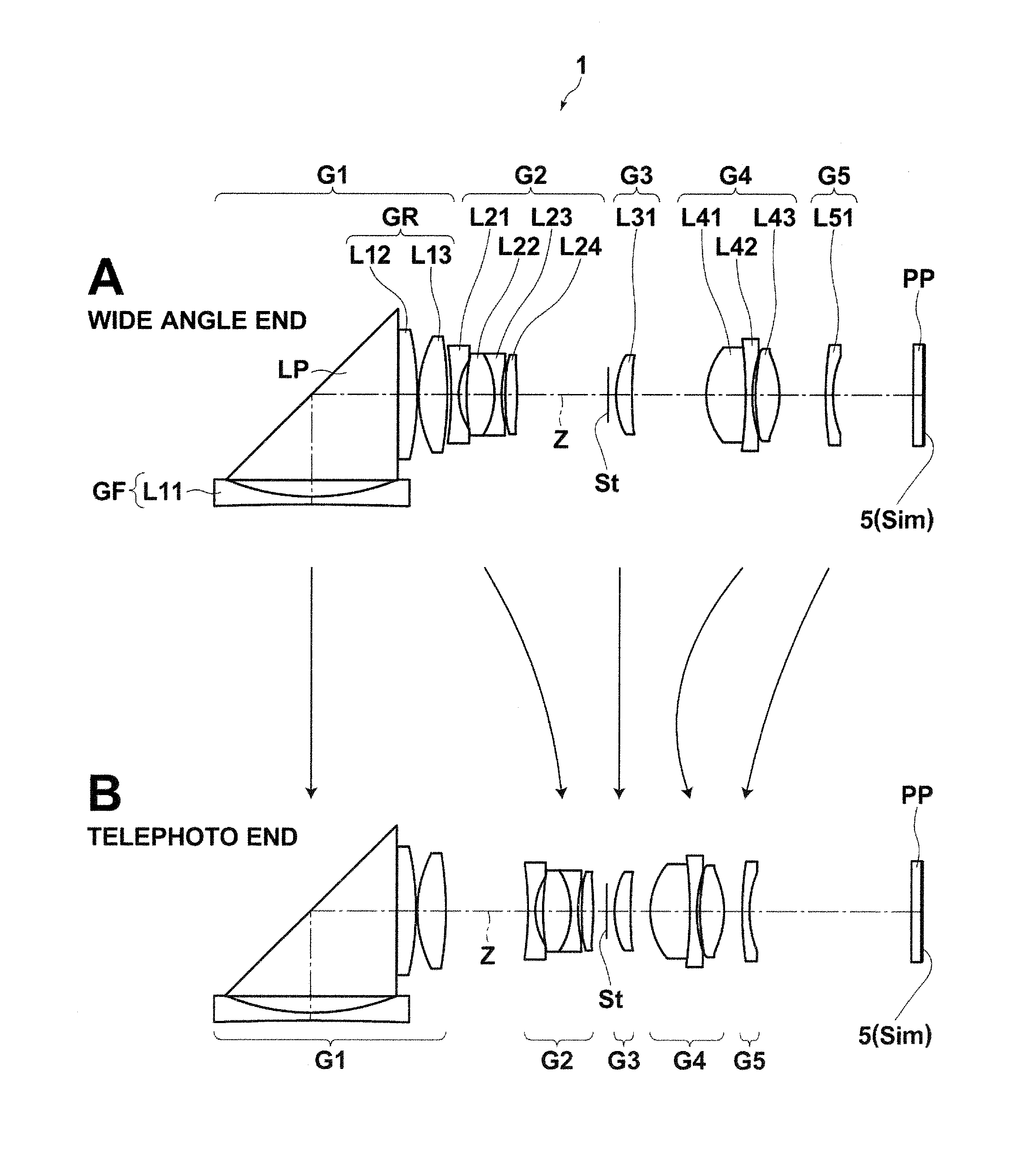Zoom lens and imaging apparatus
a zoom lens and imaging apparatus technology, applied in the field of zoom lenses and imaging apparatuses, can solve the problems of difficult to be regarded as a wide angle, disadvantageous lenses, and size reduction of patent documents 1 and 2, and achieve the effects of reducing size, widening angle of view, and reducing cos
- Summary
- Abstract
- Description
- Claims
- Application Information
AI Technical Summary
Benefits of technology
Problems solved by technology
Method used
Image
Examples
Embodiment Construction
[0068]Hereinafter, embodiments of the present invention will be described in detail with reference to drawings. First, a zoom lens according to an embodiment of the present invention will be described with reference to FIG. 1, Sections A and B.
[0069]FIG. 1, Section A and FIG. 1, Section B are cross sections of a structure example of a zoom lens 1 according to an embodiment of the present invention. The structure example illustrated in FIG. 1, Section A and FIG. 1, Section B correspond to a zoom lens in Example 1, which will be described later. FIG. 1, Section A and FIG. 1, Section B illustrate the arrangement of lenses at a wide angle end and at a telephoto end, respectively, in a state of focusing on an object at infinity. Further, arrows between FIG. 1, Section A and FIG. 1, Section B schematically illustrate the path of movement of each lens group when magnification is changed.
[0070]The zoom lens 1 includes five lens groups of first lens group G1 through fifth lens group G5. The ...
PUM
 Login to View More
Login to View More Abstract
Description
Claims
Application Information
 Login to View More
Login to View More - R&D
- Intellectual Property
- Life Sciences
- Materials
- Tech Scout
- Unparalleled Data Quality
- Higher Quality Content
- 60% Fewer Hallucinations
Browse by: Latest US Patents, China's latest patents, Technical Efficacy Thesaurus, Application Domain, Technology Topic, Popular Technical Reports.
© 2025 PatSnap. All rights reserved.Legal|Privacy policy|Modern Slavery Act Transparency Statement|Sitemap|About US| Contact US: help@patsnap.com



